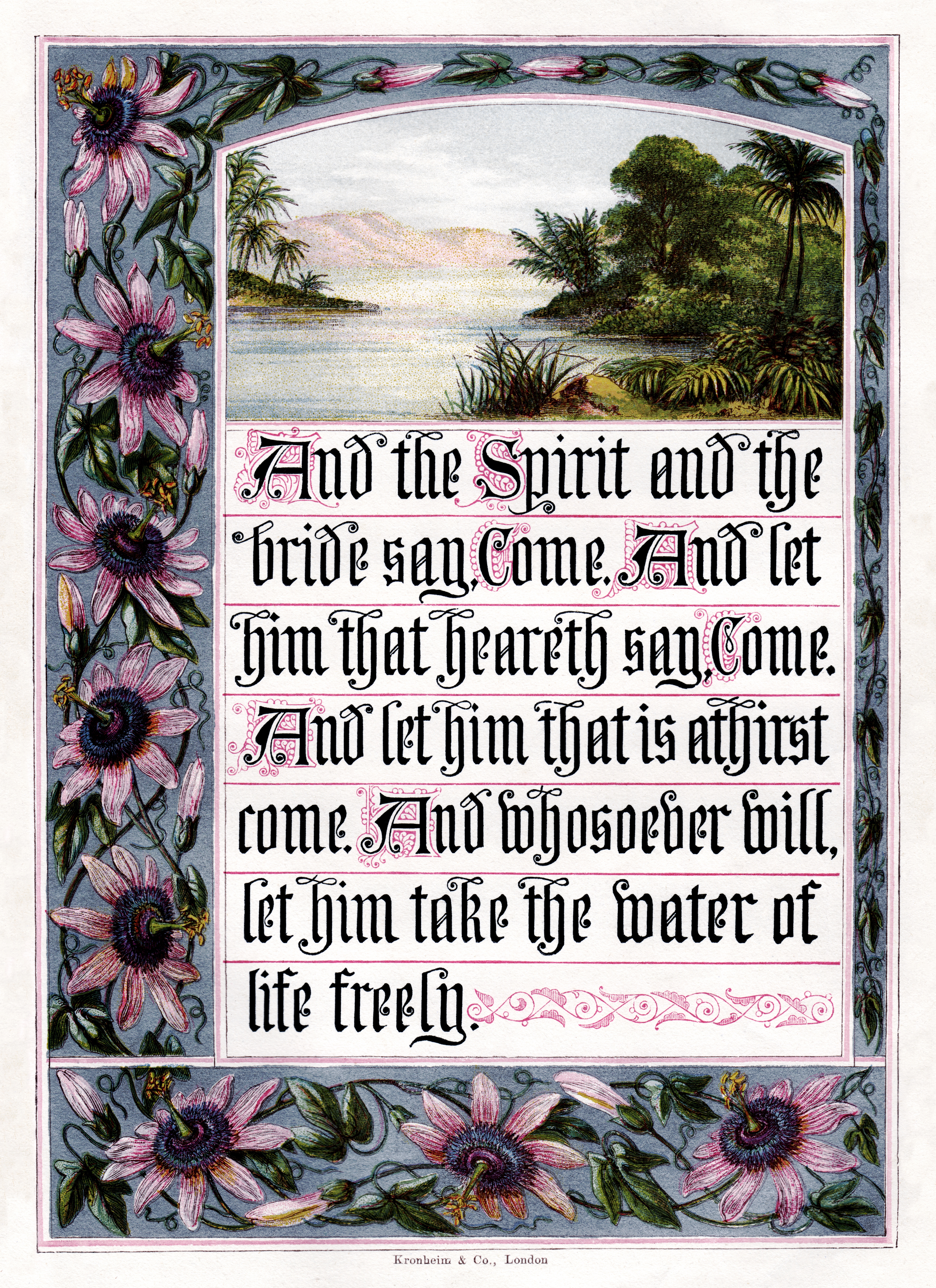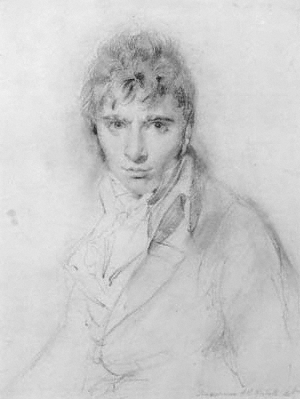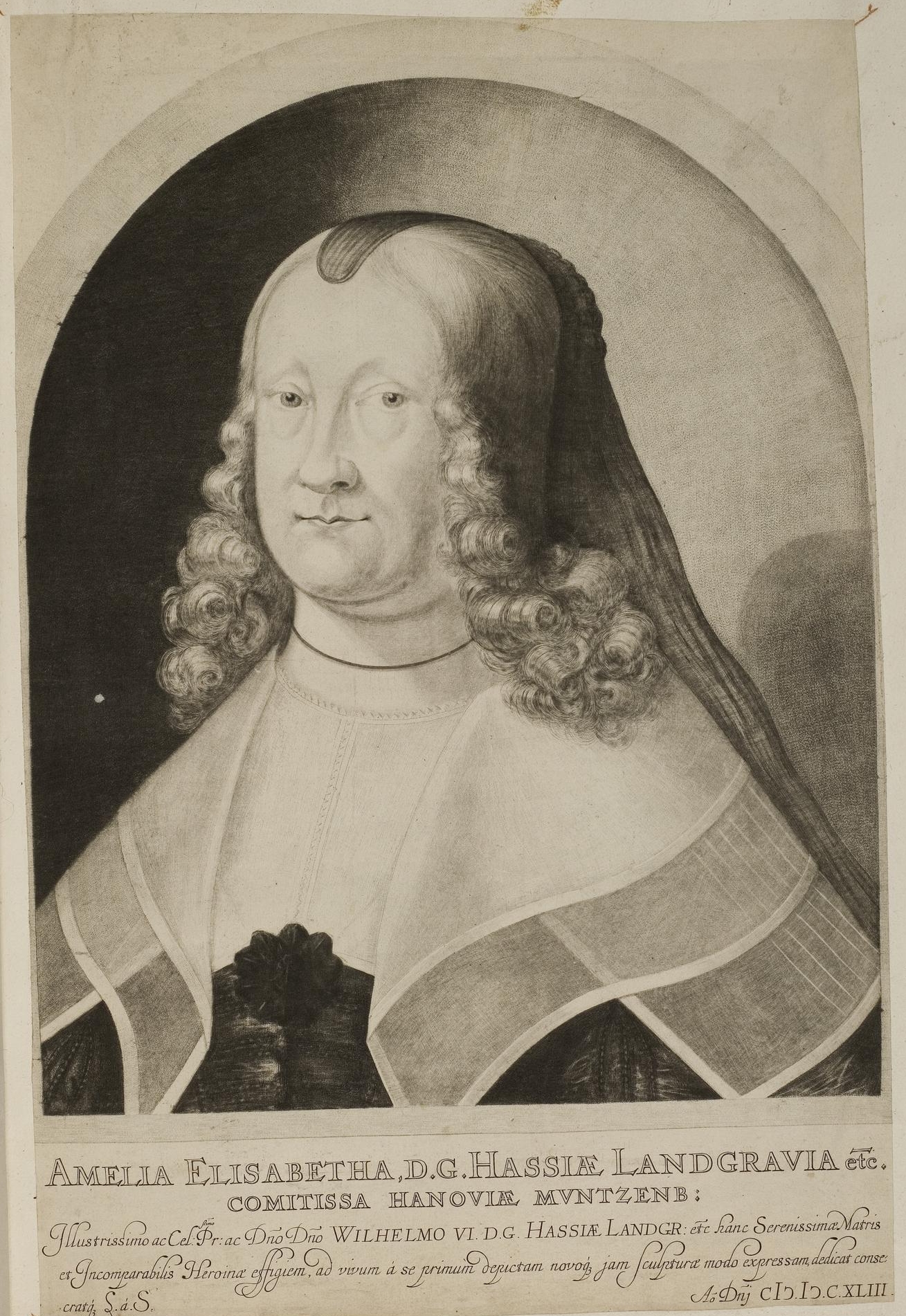|
George Baxter (printer)
George Baxter (1804–1867) was an English artist and printer based in London. He is credited with the invention of commercially viable colour printing. Though colour printing had been developed in China centuries before, it was not commercially viable. However, in early years of the 19th century the process of colour printing had been revived by George Savage, a Yorkshireman in London. It was to be Savage's methods upon which Baxter, already an accomplished artist and engraver, was to improve. In 1828, Baxter began experimenting with colour printing by means of woodblocks. Baxter's life Baxter was born in 1804 in Lewes, Sussex, and was the second son of John Baxter, a printer. At 20, Baxter was illustrating books printed by his father; at 23, Baxter moved to London to be apprenticed to Samuel Williams, a wood engraver. In 1827, Baxter set up his own business and married Mary Harrild, daughter of Robert Harrild, a printing engineer and a friend of Baxter's father. Ba ... [...More Info...] [...Related Items...] OR: [Wikipedia] [Google] [Baidu] |
English People
The English people are an ethnic group and nation native to England, who speak the English language, a West Germanic language, and share a common history and culture. The English identity is of Anglo-Saxon origin, when they were known in Old English as the ('race or tribe of the Angles'). Their ethnonym is derived from the Angles, one of the Germanic peoples who migrated to Great Britain around the 5th century AD. The English largely descend from two main historical population groups the West Germanic tribes (the Angles, Saxons, Jutes and Frisians) who settled in southern Britain following the withdrawal of the Romans, and the partially Romanised Celtic Britons already living there.Martiniano, R., Caffell, A., Holst, M. et al. Genomic signals of migration and continuity in Britain before the Anglo-Saxons. Nat Commun 7, 10326 (2016). https://doi.org/10.1038/ncomms10326 Collectively known as the Anglo-Saxons, they founded what was to become the Kingdom of England ... [...More Info...] [...Related Items...] OR: [Wikipedia] [Google] [Baidu] |
Joseph Martin Kronheim
Joseph Martin Kronheim (1810–1896) was a German-born lithographer and wood engraver known for founding Kronheim & Co. and working with George Baxter. Biography Kronheim was born on October 26, 1810 in Magdeburg, Germany. By the age of 22 he resided in Edinburgh, and died at the age of 85 in 1896, in Berlin. Kronheim & Co. During the mid-1860s, Kronheim and Co. printed hundreds of biblical prints, adding to the firm's eventual total output of as many as 5000 different prints. Kronheim & Co. utilized the Baxter process to create prints. Kronheim's chief innovation in the field was the use of zinc instead of wood blocks, which reduced the amount of time needed to complete prints, but resulted in a less shiny finish. By 1855, thanks in large part to the firm's use of zinc blocks, Kronheim & Co. had produced over 1000 different prints, including some for the 1855 Paris Exhibition. After the exhibition, Kronheim sold his share of the business to Oscar Frauenknecht. Kronhei ... [...More Info...] [...Related Items...] OR: [Wikipedia] [Google] [Baidu] |
Fanny Corbaux
Marie Françoise Catherine Doetger "Fanny" Corbaux (1812–1883) was a British painter and biblical commentator. She was also the inventor of kalsomine (calcimine), whitewash with added zinc oxide. Life Corbaux was born in Paris, the daughter of Francis Corbaux, an English-born statistician and mathematician, the author of the ''Dictionnaire des Arbitrages des Changes'', and the ''Doctrine of Compound Interest'', who spent much of his life abroad. When she was about fifteen her father was reduced to poverty, and, despite a minimal artistic education, she was obliged to use her talent for painting to earn money. She later remembered:"I tried to use colours; but so little idea had I of painting, that when the well-known coloured print, 'Gaston de Foix,' was lent me to copy, I remember my extreme anxiety to copy the appearance of the engraving, by imitating its lines of shading, in the armour and draperies, with the colour. She quickly developed her talents, and in 1827 she was awar ... [...More Info...] [...Related Items...] OR: [Wikipedia] [Google] [Baidu] |
Letitia Landon In Pictorial Album; Or, Cabinet Of Paintings For The Year 1837/The Carrier Pigeon
Letitia is a feminine given name, of Latin origin meaning "joy, gladness". The name Letitia has many variants, including but not limited to: Lætitia from lætus (Latin), Letja (Dutch), Letizia (Italian), Leticia (Spanish), Letisya (Turkish) and Letisha or Latisha (American). The name Letitia first appeared in the form Lettice in medieval England and is derived from the Roman goddess Lætitia of gaiety, symbolic of happiness, prosperity and abundance. Variants *Letícia ( Portuguese, Spanish, Hungarian) *Letitia (English), Spanish, Latin *Letizia ( Italian) *Leata (English), Spanish *Lätitia (German) *Lätitzia (German) *Tizia (German) *Lätizia (German) *Leattah ( Jamaican) Spanish * Laetitia ( French, Late Latin, German) * Letizia ( Italian, Corsican) *Leticija ( Latvian) *Letiția (Romanian, Moldovan) *Летиция ( Russian) *Летисия ( Russian) * Leticia (Spanish) *Lelê ( Portuguese) *Leca ( Portuguese) *Letja ( Dutch) *Leleca ( Portuguese) *Tica ( Portuguese) *L ... [...More Info...] [...Related Items...] OR: [Wikipedia] [Google] [Baidu] |
Richard Westall
Richard Westall (2 January 1765 – 4 December 1836) was an English painter and illustrator of portraits, historical and literary events, best known for his portraits of Byron. He was also Queen Victoria's drawing master. Biography Westall was the more successful of two half-brothers (both sons of a Benjamin Westall, from Norwich) who both became painters. His younger half-brother was William Westall (1781–1850), a much-travelled landscape painter. Born on 2 January 1765 in Reepham near Norwich (where he was baptised at All Saints on 13 January in the same year), Richard Westall moved to London after the death of his mother and the bankruptcy of his father in 1772. Westall was apprenticed to a heraldic silver engraver in 1779, where he was encouraged to become a painter by John Alefounder; he then began studying at the Royal Academy School of Arts from 10 December 1785. He exhibited at the Academy regularly between 1784 and 1836, became an Associate in Novemb ... [...More Info...] [...Related Items...] OR: [Wikipedia] [Google] [Baidu] |
Letitia Landon In Pictorial Album; Or, Cabinet Of Paintings For The Year 1837
Letitia is a feminine given name, of Latin origin meaning "joy, gladness". The name Letitia has many variants, including but not limited to: Lætitia from lætus (Latin), Letja (Dutch), Letizia (Italian), Leticia (Spanish), Letisya (Turkish) and Letisha or Latisha (American). The name Letitia first appeared in the form Lettice in medieval England and is derived from the Roman goddess Lætitia of gaiety, symbolic of happiness, prosperity and abundance. Variants *Letícia ( Portuguese, Spanish, Hungarian) *Letitia (English), Spanish, Latin *Letizia ( Italian) *Leata (English), Spanish *Lätitia (German) *Lätitzia (German) *Tizia (German) *Lätizia (German) *Leattah ( Jamaican) Spanish * Laetitia ( French, Late Latin, German) * Letizia ( Italian, Corsican) *Leticija ( Latvian) *Letiția (Romanian, Moldovan) *Летиция ( Russian) *Летисия ( Russian) * Leticia (Spanish) *Lelê ( Portuguese) *Leca ( Portuguese) *Letja ( Dutch) *Leleca ( Portuguese) *Tica ( Portuguese) *L ... [...More Info...] [...Related Items...] OR: [Wikipedia] [Google] [Baidu] |
Letitia Elizabeth Landon
Letitia Elizabeth Landon (14 August 1802 – 15 October 1838) was an English poet and novelist, better known by her initials L.E.L. The writings of Landon are transitional between Romanticism and the Victorian Age. Her first major breakthrough came with ''The Improvisatrice'' and thence she developed the metrical romance towards the Victorian ideal of the Victorian monologue, casting her influence on Elizabeth Barrett Browning, Robert Browning and Christina Rossetti. Her influence can also be found in Alfred Tennyson and in America, where she was very popular. Poe regarded her genius as self-evident. In spite of these wide influences, due to the perceived immorality of Landon's lifestyle, her works were more or less deliberately suppressed and misrepresented after her death. Early life Letitia Elizabeth Landon was born on 14 August 1802 in Chelsea, London to John Landon and Catherine Jane, ''née'' Bishop.Byron (2004). A precocious child, Landon learned to read as a tod ... [...More Info...] [...Related Items...] OR: [Wikipedia] [Google] [Baidu] |
Lithography
Lithography () is a planographic method of printing originally based on the immiscibility of oil and water. The printing is from a stone ( lithographic limestone) or a metal plate with a smooth surface. It was invented in 1796 by the German author and actor Alois Senefelder and was initially used mostly for musical scores and maps.Meggs, Philip B. A History of Graphic Design. (1998) John Wiley & Sons, Inc. p 146 Carter, Rob, Ben Day, Philip Meggs. Typographic Design: Form and Communication, Third Edition. (2002) John Wiley & Sons, Inc. p 11 Lithography can be used to print text or images onto paper or other suitable material. A lithograph is something printed by lithography, but this term is only used for fine art prints and some other, mostly older, types of printed matter, not for those made by modern commercial lithography. Originally, the image to be printed was drawn with a greasy substance, such as oil, fat, or wax onto the surface of a smooth and flat limestone pl ... [...More Info...] [...Related Items...] OR: [Wikipedia] [Google] [Baidu] |
Mezzotint
Mezzotint is a monochrome printmaking process of the '' intaglio'' family. It was the first printing process that yielded half-tones without using line- or dot-based techniques like hatching, cross-hatching or stipple. Mezzotint achieves tonality by roughening a metal plate with thousands of little dots made by a metal tool with small teeth, called a "rocker". In printing, the tiny pits in the plate retain the ink when the face of the plate is wiped clean. This technique can achieve a high level of quality and richness in the print. ''Mezzotint'' is often combined with other ''intaglio'' techniques, usually etching and engraving. The process was especially widely used in England from the eighteenth century, to reproduce portraits and other paintings. It was somewhat in competition with the other main tonal technique of the day, aquatint. Since the mid-nineteenth century it has been relatively little used, as lithography and other techniques produced comparable results more ea ... [...More Info...] [...Related Items...] OR: [Wikipedia] [Google] [Baidu] |
Aquatint
Aquatint is an intaglio printmaking technique, a variant of etching that produces areas of tone rather than lines. For this reason it has mostly been used in conjunction with etching, to give both lines and shaded tone. It has also been used historically to print in colour, both by printing with multiple plates in different colours, and by making monochrome prints that were then hand-coloured with watercolour. It has been in regular use since the later 18th century, and was most widely used between about 1770 and 1830, when it was used both for artistic prints and decorative ones. After about 1830 it lost ground to lithography and other techniques. There have been periodic revivals among artists since then. An aquatint plate wears out relatively quickly, and is less easily reworked than other intaglio plates. Many of Goya's plates were reprinted too often posthumously, giving very poor impressions. Among the most famous prints using the aquatint technique are the major s ... [...More Info...] [...Related Items...] OR: [Wikipedia] [Google] [Baidu] |
Etching
Etching is traditionally the process of using strong acid or mordant to cut into the unprotected parts of a metal surface to create a design in intaglio (incised) in the metal. In modern manufacturing, other chemicals may be used on other types of material. As a method of printmaking, it is, along with engraving, the most important technique for old master prints, and remains in wide use today. In a number of modern variants such as microfabrication etching and photochemical milling it is a crucial technique in much modern technology, including circuit boards. In traditional pure etching, a metal plate (usually of copper, zinc or steel) is covered with a waxy ground which is resistant to acid. The artist then scratches off the ground with a pointed etching needle where the artist wants a line to appear in the finished piece, exposing the bare metal. The échoppe, a tool with a slanted oval section, is also used for "swelling" lines. The plate is then dipped in a bath of ac ... [...More Info...] [...Related Items...] OR: [Wikipedia] [Google] [Baidu] |
Stipple Engraving
Stipple engraving is a technique used to create tone in an intaglio print by distributing a pattern of dots of various sizes and densities across the image. The pattern is created on the printing plate either in engraving by gouging out the dots with a burin, or through an etching process. Stippling was used as an adjunct to conventional line engraving and etching for over two centuries, before being developed as a distinct technique in the mid-18th century. The technique allows for subtle tonal variations and is especially suitable for reproducing chalk drawings. Early history Stipple effects were used in conjunction with other engraving techniques by artists as early as Giulio Campagnola (c.1482 – c. 1515) and Ottavio Leoni (1578–1630), although some of Campagnola's small prints were almost entirely in stipple. In Holland in the seventeenth century, the printmaker and goldsmith Jan Lutma developed an engraving technique, known as ''opus mallei'', in which the dots are ... [...More Info...] [...Related Items...] OR: [Wikipedia] [Google] [Baidu] |






.jpg)



